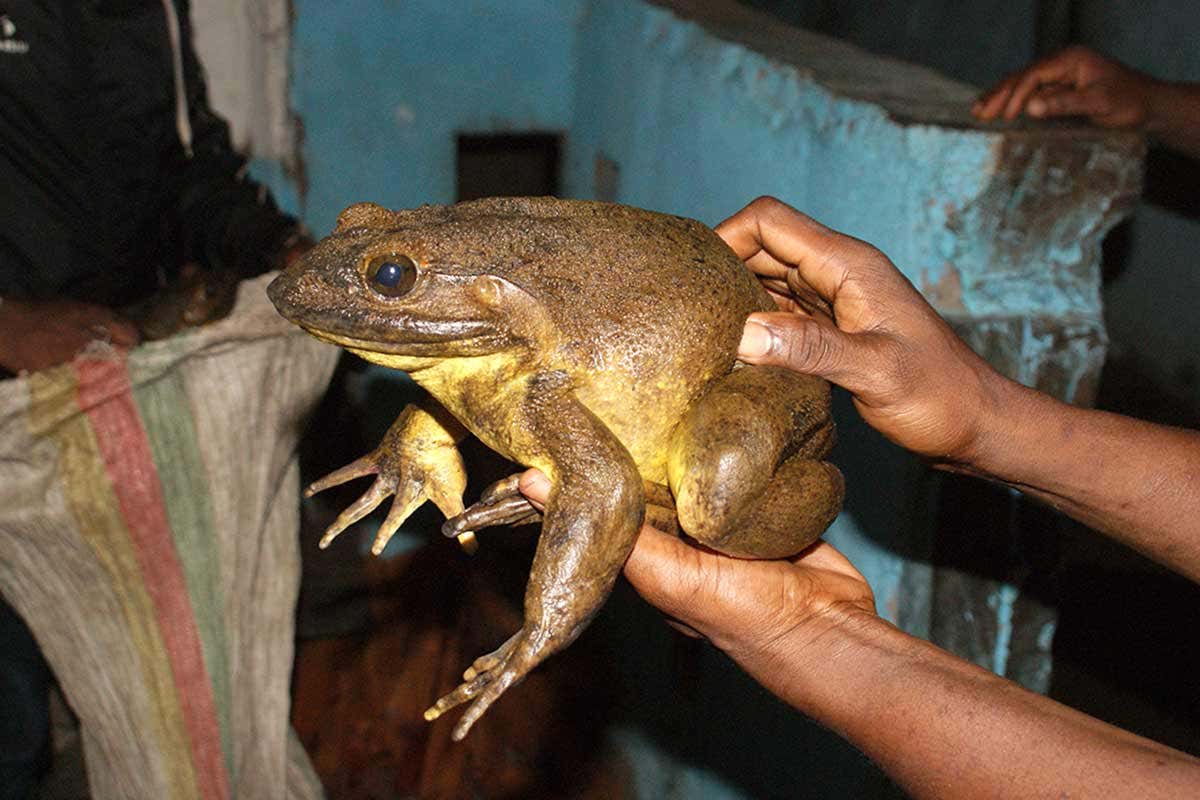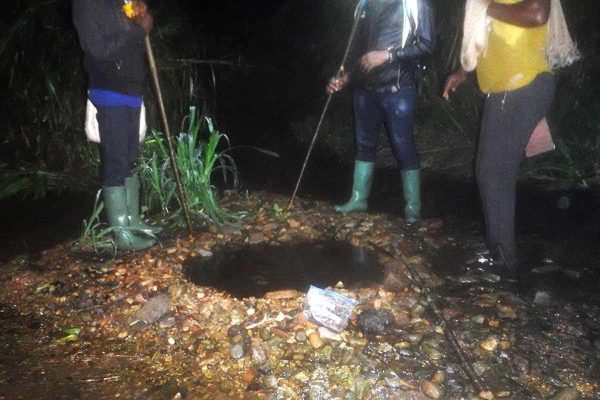World’s largest Frog Moves Heavy Rocks For Its Own Pond

Although Conraua goliath, the Goliath frogs of the rainforests of southwestern Cameroon and Equatorial Guinea, have been known to herpetologists for many years, until now little was known of how they got so big.
At about thirteen inches long, excluding the legs, and six to seven pounds, the Goliath is the largest frog in the world and has been on the earth for around two hundred and fifty million years.
Scientists believe the frog may have gotten so big as a result of their unusual behavior of digging nests and making ponds by moving rocks as heavy as four pounds.
Not much is known about the frogs as they are extremely shy and it is difficult to observe them, but according to Marvin Schäfer from the Berlin Museum of Natural History, the frogs create ponds as nesting areas to keep their eggs and tadpoles safe.
They even appear to monitor and guard the safety of the nests which is highly unusual behavior for frogs. It’s possible that the work of building ponds, including moving rocks, may be the reason the frogs’ gigantism developed.
Other frogs usually just deposit their eggs on the ground near water but the Goliath lives near fast moving streams and waterfalls so they pile up rocks and other materials from the river and make a small pond to protect the eggs from washing away or getting eaten.

While it’s not known for certain, it appears that the male usually builds the nest while the female waits nearby. Often, he must chase other male intruders away.
Sometimes the nests are just natural ponds among rocks where the leaves and debris need cleaned out or a small pond developed by excavating dirt and creating a depression similar to a dam, but it is often a full blown large excavation surrounded by rocks brought and positioned by the male frogs.
The nests are kept clean so predators can be easily spotted. When the nest is ready, the female can lay up to three thousand eggs for the male to fertilize. At times, juveniles in the nest are of differing ages showing the frogs may return and reuse the nests.
Researchers set up a camera to observe the behavior of the parents after the eggs had been laid. From sundown to sunup one of the frogs stood vigil over the nest, most probably the female.
When the tadpoles are grown to a sufficient level, the female opens the nest to allow the babies to begin their lives in the wild. As of yet, no one has observed the nest building in action, but researchers plan to revisit study sites to film more.
Goliath frogs have the ability to jump about ten feet. They feed at night on insects, fish, and other amphibians. The frogs are mute but have the ability to whistle to call mates.
Their incubation period lasts for about ninety-five days, and scientists think it takes up to a year to reach full maturity. It is believed that they can live up to fifteen years if left alone but live only about five years in captivity. They are mostly a mottled green color with bumpy skin.
The huge amphibians are now endangered because they are hunted for the pet trade, for food, as the frogs are considered a delicacy, and, according to San Diego Zoo Animals & Plants, many are sent to the United States for frog jumping contests. Although a law has been passed protecting the frogs, poachers still hunt in order to sell the frog meat.
Another article From Us: ‘Human-sized Penguin’ Lived in New Zealand
The Goliaths’ nesting places are also being encroached upon by human settlements, logging, and farming which pushes more debris into the streams. Pollution, climate change, and deforestation and fires in the rainforests are also harming the Goliaths who have been on the planet much longer than humans. The giant frogs’ lives are in our hands.
